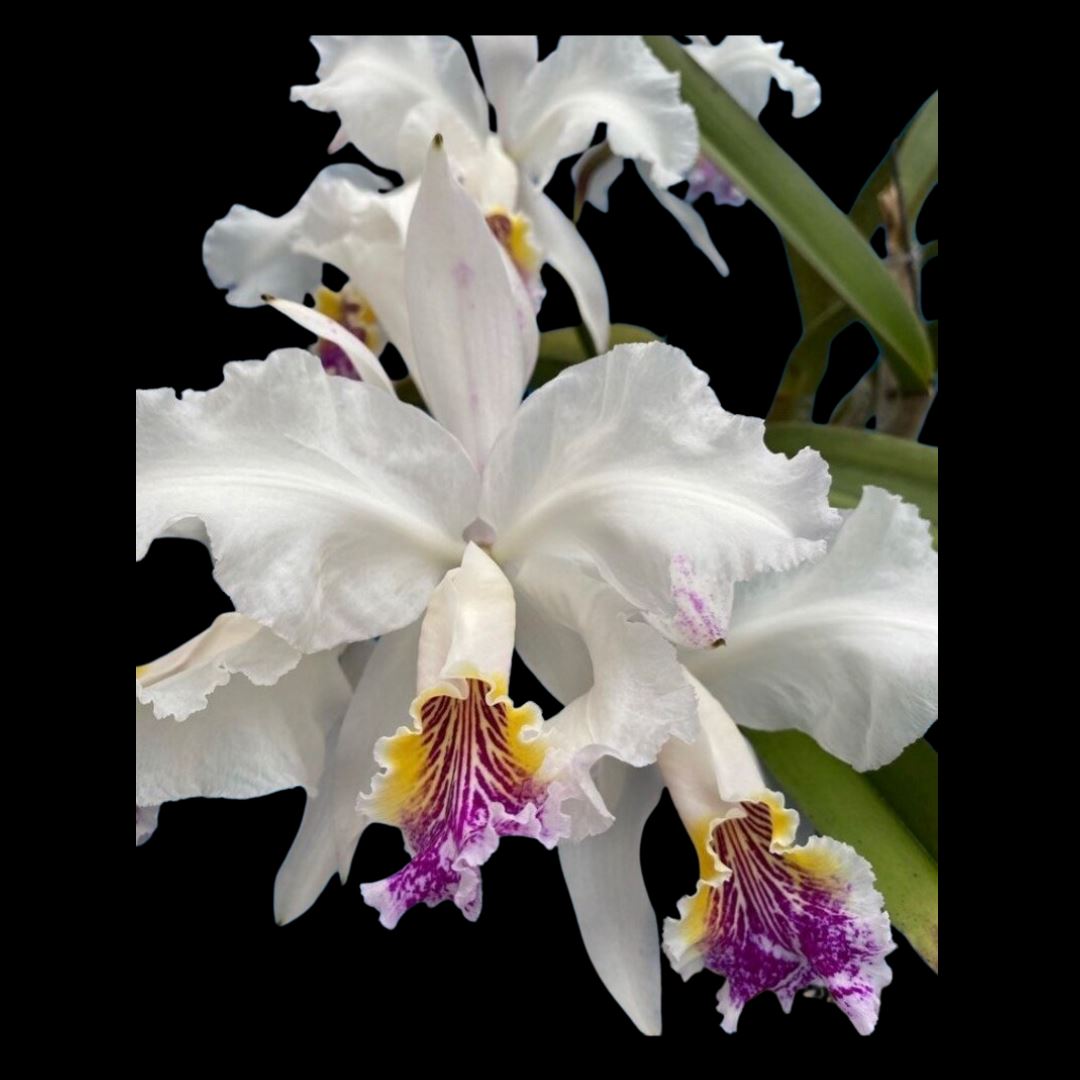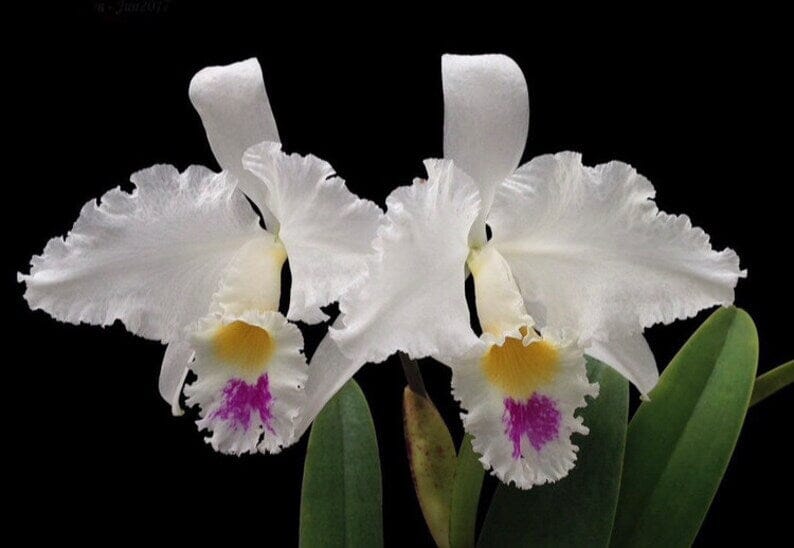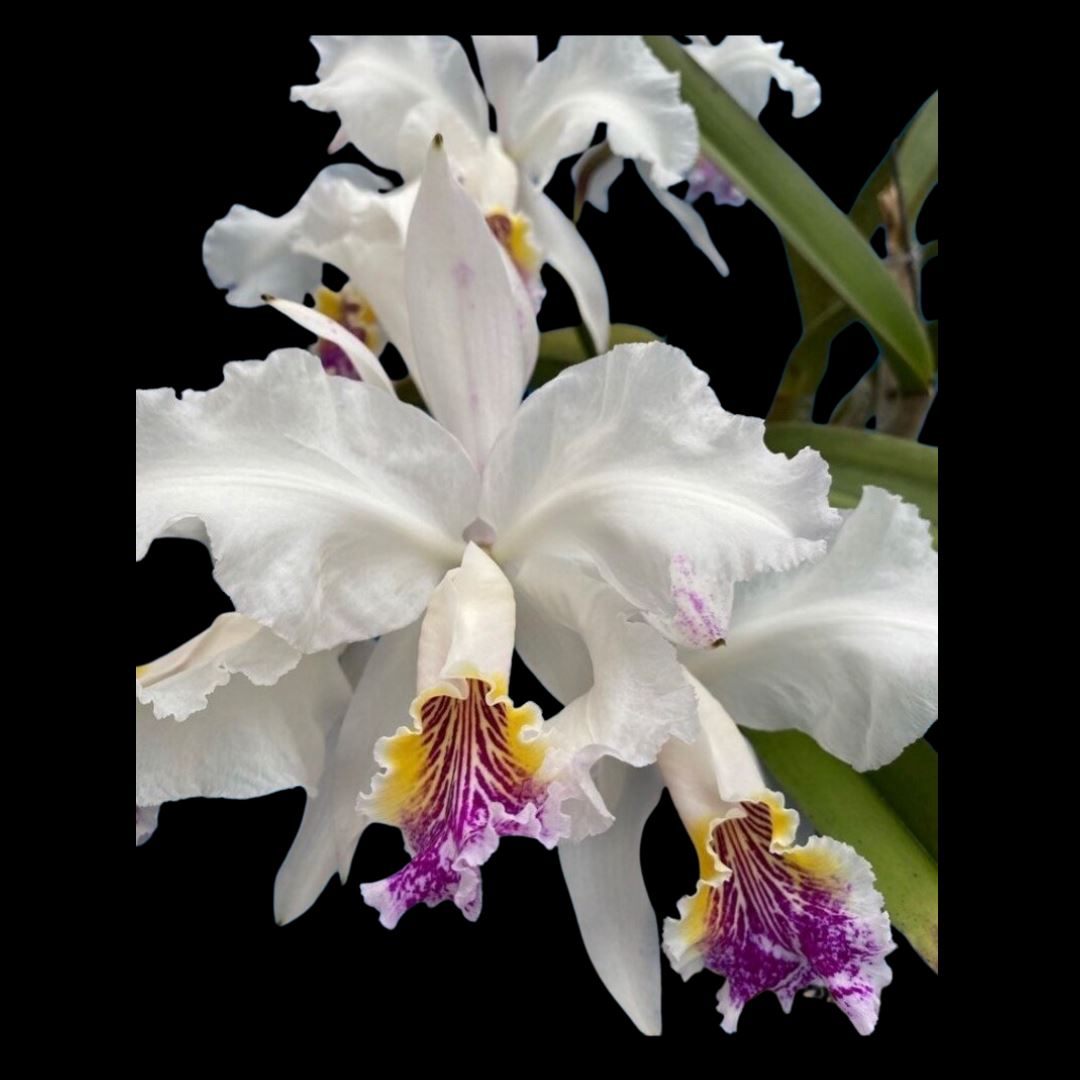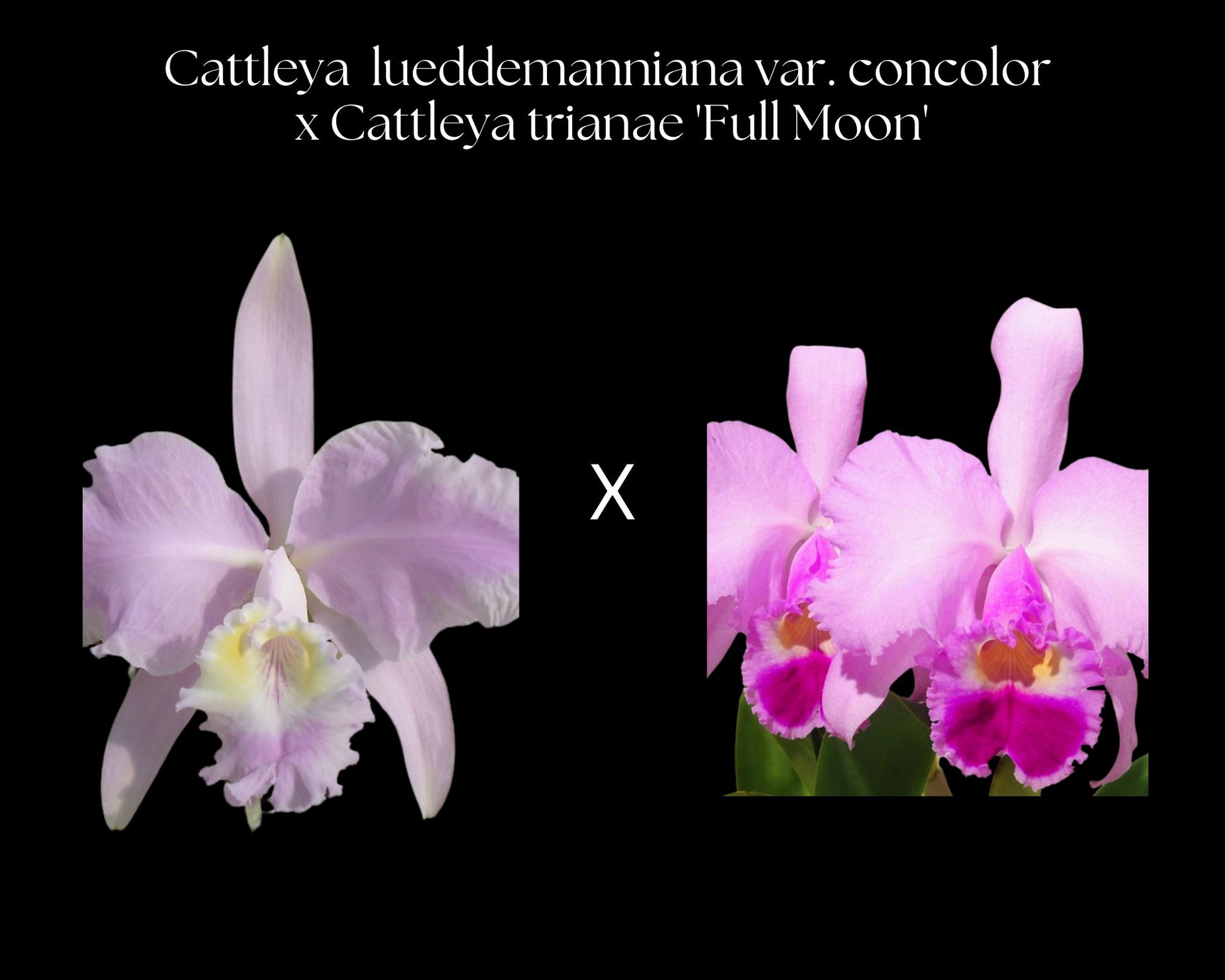Introducing our exquisite primary hybrid cross, the Cattleya lueddemanniana var. concolor x Cattleya trianae 'Full Moon'. This splendid orchid is the perfect replacement for the traditional Christmas Orchid, with the added allure of the 'Full Moon' variety.
Cattleya lueddemanniana var. concolor, a species native to Venezuela, graces us with showy, fragrant flowers ranging in shades of lavender-pink, each measuring 5" to 6" wide. The blooms are further adorned with striking indigo markings and a vibrant yellow center on the lip. Brace yourself for an enchanting flowering season from late December to March, making it a perfect addition to your winter garden.
On the other hand, Cattleya trianae 'Full Moon'AM/AOS, a lavender-white flowering tropical epiphyte orchid hailing from Colombia, boasts succulent light green leaves. As an epiphyte, it thrives by clinging to tall jungle trees, deriving nutrients from air, water, and decaying plant matter surrounding its fleshy rhizomes. The 'Full Moon' variety, with its alluring lavender-white blossoms, adds a touch of tropical elegance to any orchid collection.
Cultivating these beauties requires attention to their specific needs. Ensure quick-draining soil, high humidity, specialized light conditions, and temperatures on the higher side. Despite their specific requirements, Cattleya orchids are known for being among the easiest orchids to grow, and the reward is a spectacular, fragrant display.
For optimal growth, provide bright, indirect light—approximately 5,000 foot candles of intensity. A south-facing window is ideal, but be wary of dark leaves indicating insufficient sunlight. These orchids prefer temperatures between 60 and 90 degrees Fahrenheit and thrive in higher humidity levels. Create a humid environment by placing a saucer with medium-sized pebbles under the plant. Remember, these orchids detest sitting in water to avoid root rot.
Watering is an art with these orchids. Let the potting mix mostly dry out between waterings, but never let it fully dry. Water once a week for mature plants, allowing water to drain well before returning the pot to its place. Fertilize regularly with a balanced fertilizer after watering, either twice a month at half strength or weekly at quarter strength.
Understanding the three main parts of the plant—rhizomes, leaves, and pseudobulbs—is crucial for successful cultivation. Pseudobulbs, acting as food and water storage, bear single naked stems with captivating flowers. Repot every two years or when the rhizome protrudes over the pot's edge, using a well-aerated orchid mix.
This is a blooming size in a 4” clay pot, about 1 to 2 years to bloom, grown from seed, limited!
Bring the beauty of the Cattleya lueddemanniana var. concolor x Cattleya trianae 'Full Moon' into your home or garden. With proper care, watch these orchids flourish, rewarding you with a stunning and fragrant spectacle.


















